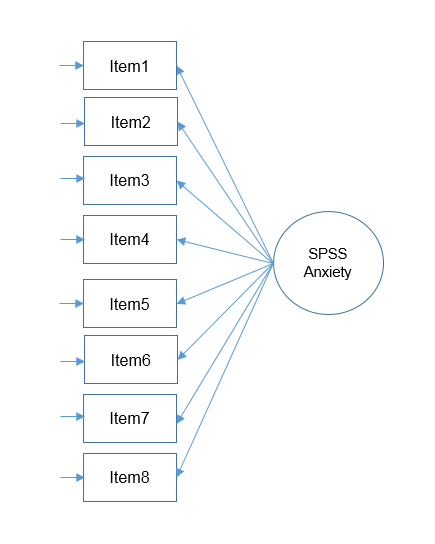Overview
Factor analysis is a method for modeling observed variables and their covariance structure in terms of unobserved variables (i.e., factors). There are two types of factor analyses, exploratory and confirmatory. Exploratory factor analysis (EFA) is method to explore the underlying structure of a set of observed variables, and is a crucial step in the scale development process. The first step in EFA is factor extraction. During this seminar, we will discuss how principal components analysis and common factor analysis differ in their approach to variance partitioning. Common factor analysis models can be estimated using various estimation methods such as principal axis factoring and maximum likelihood, and we will compare the practical differences between these two methods. After extracting the best factor structure, we can obtain a more interpretable factor solution through factor rotation. Here is where we will discuss the difference between orthogonal and oblique rotations, and finally how to the final solution to generate a factor score. For the latter portion of the seminar we will introduce confirmatory factor analysis (CFA), which is a method to verify a factor structure that has already been defined. Topics to discuss include identification, model fit, and degrees of freedom demonstrated through a three-item, two-item and eight-item one factor CFA and a two-factor CFA. SPSS will be used for the EFA portion of the seminar and R (lavaan) will be used for the CFA portion. You can click on the main link to access each portion of the seminar.
I. Exploratory Factor Analysis (EFA)
- Introduction
- Motivating example: The SAQ
- Pearson correlation formula
- Partitioning the variance in factor analysis
- Extracting factors
- principal components analysis
- common factor analysis
- principal axis factoring
- maximum likelihood
- Rotation methods
- Simple Structure
- Orthogonal rotation (Varimax)
- Oblique (Direct Oblimin)
- Generating factor scores
II. Confirmatory Factor Analysis (CFA)
- Introduction
- One Factor Confirmatory Factor Analysis
- Known values, parameters, and degrees of freedom
- Three-item (one) factor analysis
- Identification of a three-item one factor CFA
- Running a one-factor CFA in lavaan
- (Optional) How to manually obtain the standardized solution
- (Optional) Degrees of freedom with means
- One factor CFA with two items
- One factor CFA with more than three items (SAQ-8)
- Model Fit Statistics
- Two Factor Confirmatory Factor Analysis
 References
References
DiStefano, C., Zhu, M., & Mindrila, D. (2009). Understanding and using factor scores: Considerations for the applied researcher. Practical Assessment, Research & Evaluation, 14(20), 2.
Field, A. (2009). Discovering statistics using SPSS. Sage publications.
Geiser, C. (2012). Data analysis with Mplus. Guilford Press.
Lawley, D. N., Maxwell, A. E. (1971). Factor Analysis as a Statistical Method. Second Edition. American Elsevier Publishing Company, Inc. New York.
Pett, M. A., Lackey, N. R., & Sullivan, J. J. (2003). Making sense of factor analysis: The use of factor analysis for instrument development in health care research. Sage.
